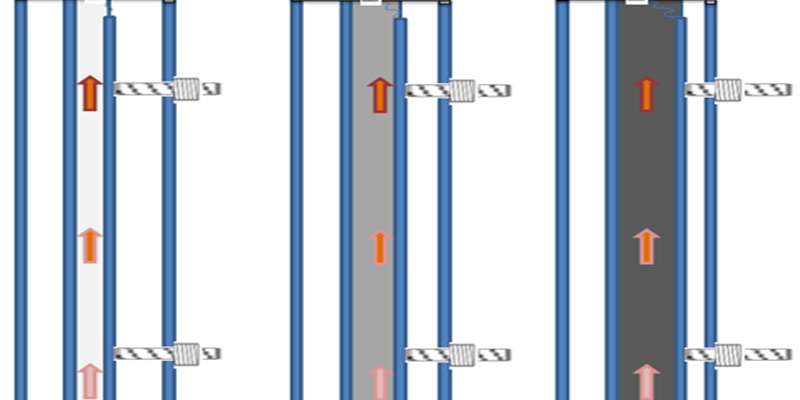Downloads
DOI:
https://doi.org/10.7480/jfde.2015.1.918Keywords:
Solar collector facade, architectural module, adaptive envelope, absorptance regulation, indoor comfort, dynamic control, thermal loads reductionAbstract
A solar active envelope module with a high flexibility degree is proposed in this paper. The transparent module controls the day-lighting of the room, improving the indoor environment, while absorbing the superfluous solar energy inside. That energy is used to increase the efficiency of heating, ventilation, and the air-conditioning (HVAC) system of the building. This is carried out through a fine control of the absorptance of the envelope module. The active envelope module consists of three glazed chambers with advanced coatings and frames to assure a minimum thermal transmittance while allowing transparency. A fluid containing heat-absorbing nanoparticles flows inside the central chamber and is heated up due to the impinging solar energy. Unlike other systems proposed in the past, which included transparency control systems based on complex filters and chemical processes, the absorption of the module is controlled by the variation of the thickness of the central chamber with a mechanical device. That is, varying the thickness of the central chamber, it allows controlling the absorptance of the whole system and, as a result, indoor day-lighting and thermal loads. Therefore, a new system is proposed that enables to:
How to Cite
Published
Issue
Section
License
Copyright (c) 2015 C. Villasante Villasante, I. del Hoyo, I. Pagola, M. Sanchez, E. Aranzabe

This work is licensed under a Creative Commons Attribution 4.0 International License.
Authors or their institutions retain copyright to their publications without restrictions.
References
Bertsch, S., Oppliger, D., & Menzi, T. (2013). U.S. Patent No. 20130263535Al.
Elmqvist, H., & Mattsson, S. E. (1997). Modelica - The next generation modeling language – An international design effort, Proceedings of the 1st World Congress on System Simulation, Singapore.
Frantl, E. (1991). U.S. Patent No. US4993235.
Fundación Tekniker, Fundación CENER-CIEMAT (2014). Spanish Patent No. P201431102. OEPM Madrid, Spain.
Gstöhl, D. (1998). World Organization Patent No. WO 98/51973.
Intelliglass: www.intelliglass.es/ (accessed 28.03.2015)
Lee, E.S. et al. (2004). The Energy Saving Potential of Electrochromic Windows in the US Commercial Building Modelica-Association, (2012). Modelica® - A Unified Object-Oriented Language for Systems Modeling - Language
Specification – Version 3.3, Modelica-Association, https://www.modelica.org (accessed 28.03.2015)
Schwarz, D. (2001). U.S. Patent No. US6216688.
Sector Building. Technologies Program, Environmental Energy Division, Lawrence Berkeley National Laboratory, 2004.
Wittwer, V., Graf, W., & Georg, A. (2002). Gaschromic Glazings with a Large Dynamic Range in Total Solar Energy Transmittance. NREL 5th International Meeting on Electrochromism, 2002.
